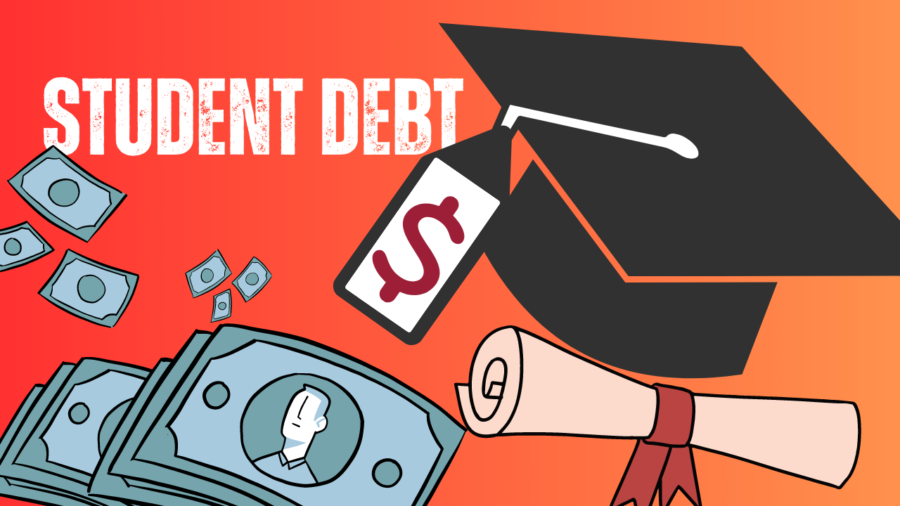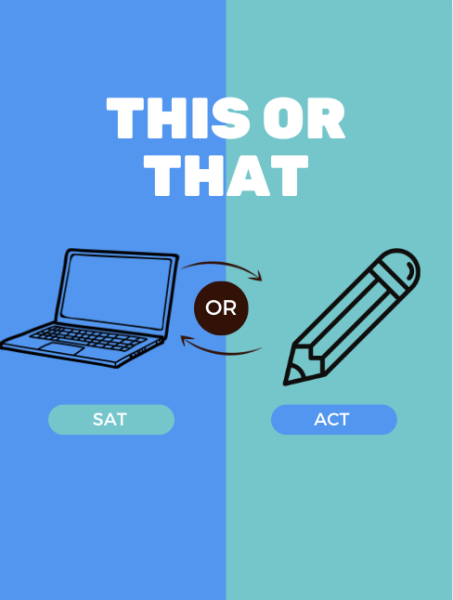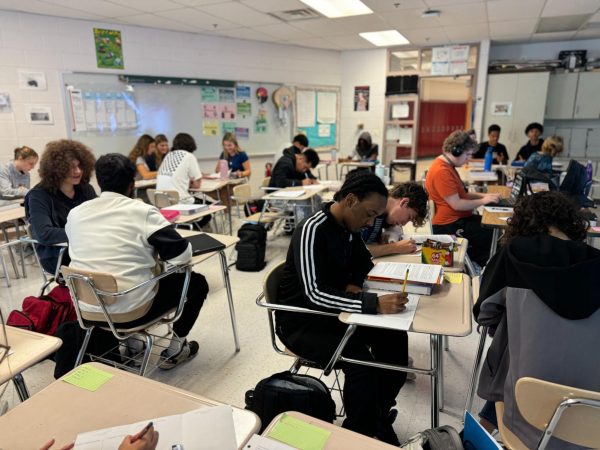Biden’s Student Loan Forgiveness Plan Masks Larger Issue
The Biden administration’s student loan forgiveness plan to cancel $400 billion in student loan debt for millions of Americans is at the mercy of the Supreme Court’s conservative majority. The court is mulling over the constitutionality of President Biden’s program after six Republican-led states filed a lawsuit against it. The Supreme Court, which started to hear arguments on Feb. 28, likely won’t make a ruling until June 2023.
But what does Biden’s plan entail? And is it the remedy to the nationally unnerving student debt crisis? Contrary to many hopes, Biden’s “Hail Mary” program is not.
Biden’s student-debt plan aims to provide loan forgiveness of up to $20,000 in federal student loans for up to 40 million people. And while this figure is not nothing, it hardly accounts for the steadily increasing cost of college over the last few decades. Today, amassing over $1.75 trillion in 2022, more than half of American students leave school with student debt, making it the nation’s second most common type of debt after mortgage debt.
Senior Martha Agaba plans to pursue biological sciences at Towson University and expresses concerns about the increasing cost of higher education.
“I have received a beefy amount of money from the Free Application for Federal Student Aid (FAFSA) which I am really grateful for, but my biggest concern is just the financial burden it’ll have on my parents,” Agaba said. “My brother and I would be attending the university at the same time, so I’ve been working really hard to get scholarships that will ease the inevitable burden of expensive higher education costs.”
Besides university-offered and outside scholarships, many students turn to federally subsidized and unsubsidized loans to pay for the cost of college. Unsubsidized loans, the most common federal loan, come with a caveat of 6.54% interest. And unfortunately, even these subsidized federal student loans can compound this amount over time.
“Personally, I took out something like $40,000 of student loans and [with interest] I’ve probably spent $80,000 repaying those loans,” physics teacher Matthew Jackson said.
However, during COVID-19, teachers didn’t have to repay student loans. And as a teacher earning service as an educator in high-need schools, Jackson had the leftover $20,000 of his loans forgiven through the Teacher Forgiveness Program.
But this is not the situation for all 43.5 million student loan borrowers. For many, the amount of money owed on student loans increases due to compounded interest rates.
“My coworker had $230,000 in loans. The amount of money she owed in loans was going up,” Jackson said. “To this day, nothing’s changed. For the rest of her life she will be paying student loans.”
Biden’s plan would only forgive up to $20,000 for “qualified” student loan borrowers. In perspective, the average cost of attendance for a student living on campus at a public 4-year in-state institution is $102,828 over four years. For out-of-state universities: $176,056. For private universities: $218,004. With compounded interest over time, $20,000 easily becomes chump change.
President Biden’s student loan forgiveness plan, while a step in the right direction, is a bandaid on the gaping bullet hole that is America’s outrageously expensive and inaccessible higher education system.
“Today’s higher education expenses I think are completely unrealistic and if anything counterproductive,” Agaba said. “How does one expect people to make a living with their degree if they can’t even afford to study for it?”
Taking on student loan debt has crippling long-term effects. Student loans can delay borrowers’ ability to achieve life goals like getting married, having children, or buying a home. Financial stress is also attributed to serious health conditions like anxiety and heart disease.
So how can we combat this as a school community? For starters, we must educate prospective college students about financial literacy.
“I personally don’t think students are that well-informed because, at least at RHS, we don’t have any seminars or programs that fully inform students as to what they’re getting into financially,” Agaba said.
Fixing this issue starts with transparency regarding the cost of college. While financial situations differ from student to student, it is crucial to have these conversations early on. This means educating students on the financial differences between in-state and out-of-state or private tuition, as well as the fine print of taking student loans.
Another solution lies in destigmatizing community colleges. Many have the misconstrued view of community college as a last choice as opposed to what it may actually be: the smartest.
“I think that the amount of emphasis that as a faculty we seem to put on four-year institutions is not good,” Jackson said. “Going to Montgomery College for two years then transferring to [The University of] Maryland gets you exactly the same degree as someone who is admitted to Maryland in the beginning.”
For any students considering higher education, conversations about finances must continue at the forefront of decision-making — because, in short, I wouldn’t hold my breath for Biden’s program to be the Messiah of student loan reform.
“Is [Biden’s program] a step in the right direction? Yes. Will it make a difference for some individual people? Yes. But is it enough? Obviously not,” Jackson said.







